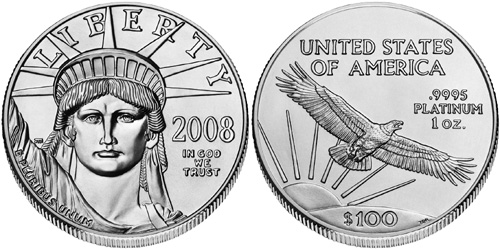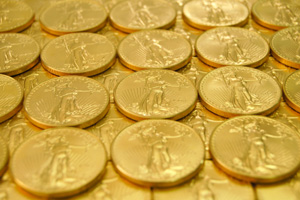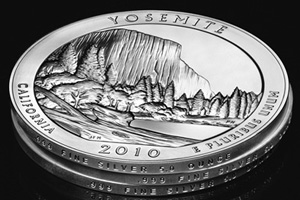 Another Precious Week
Another Precious Week
So the holiday season, with decent job creation statistics, has seen some uncustomary cheer for the dollar, and on the face of it this seems to be the main driver for the weakness of gold and silver prices. After all if you’re priced in dollars, and the dollar goes up then your price goes down. The last week has been particularly bad for gold, with a 3.5% fall (the figures below cover the whole of the holiday period) which is the largest week on week fall for six months.
The long term trend still looks like it’s going to be up, as the Central Banks are starting to buy gold, apart from the Fed – although if Ron Paul gets his way then Uncle Sam may stop being a hold out as well.
| Precious Metals Prices | ||
| Fri PM Fix | Since Last Recap | |
| Gold | $1,367.00 | -1.50 (-0.11%) |
| Silver | $28.39 | -0.39 (-1.36%) |
| Platinum | $1,735.00 | +39.00 (+2.30%) |
| Palladium | $754.00 | +16.00 (+2.17%) |
Gold-Silver Ratio: 48.15 (was 47.55)
So far the Central Banks that are buying gold are the scary ones; Russia, China and Venezuela. But one of the more interesting things is that they are doing this in secret. If it was an attempt to finish off the dollar then this would be in the open. No, they are seeing gold as an integral, and underweight part of the reserves that are going to underpin their currencies in the future. In other words an unofficial, secretive return to the gold standard. This sort of thing is not a long run dampener on the gold price.
Silver also did badly, which was shown in a rather big slip in the gold silver ratio. If the idea is that silver is priced around a third of its long term price when compared to gold, well it shouldn’t be going in this direction. Now I don’t fully buy the idea that silver has got to come to around fifteen ounces to an ounce of gold, or at least any time soon. But it hard to deny that it is out of balance.
What is even odder is that platinum and palladium have seen a large rise over the holiday period. While gold can have a life of its own, and it’s true that palladium can have more to do with what the Russian ministry of mines is up to, silver and platinum are quite similar. While platinum and palladium have seemed to be riding the same industrial metal climb as copper, silver seems to have decoupled with the feeling that perhaps we’ve overestimated the inflationary potential for the dollar with the classic inflation hedge of silver taking the hit.

 The United States Mint sold less gold bullion during 2010 than the previous year, as measured in ounces. Across their offerings of American Gold Buffalo and American Gold Eagle bullion coins, sales reached 1,429,500 in the current year compared to 1,625,000 in the prior year.
The United States Mint sold less gold bullion during 2010 than the previous year, as measured in ounces. Across their offerings of American Gold Buffalo and American Gold Eagle bullion coins, sales reached 1,429,500 in the current year compared to 1,625,000 in the prior year. Demand for physical precious metals continues to drive United States Mint bullion sales to new heights. The American Silver Eagle bullion coins sold a record 34,662,500 coins during 2010.
Demand for physical precious metals continues to drive United States Mint bullion sales to new heights. The American Silver Eagle bullion coins sold a record 34,662,500 coins during 2010.
 Sales of the 2011 Silver Eagle bullion coins will begin on Monday, January 3, 2011. This will mark the first day that authorized purchasers may place orders for the coins with the United States Mint.
Sales of the 2011 Silver Eagle bullion coins will begin on Monday, January 3, 2011. This will mark the first day that authorized purchasers may place orders for the coins with the United States Mint. In its quest to determine the best way to make money from investing in gold, the Wall Street Journal recently took an in depth look at four different gold investment strategies. Each was represented by a preeminent investor, one whose method has seen some success recently.
In its quest to determine the best way to make money from investing in gold, the Wall Street Journal recently took an in depth look at four different gold investment strategies. Each was represented by a preeminent investor, one whose method has seen some success recently. Nine out of eleven of the US Mint’s authorized purchasers have decided to go along with the new terms and conditions covering the distribution of the America the Beautiful Silver Bullion Coins.
Nine out of eleven of the US Mint’s authorized purchasers have decided to go along with the new terms and conditions covering the distribution of the America the Beautiful Silver Bullion Coins.